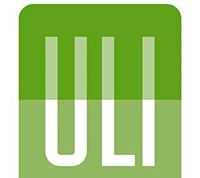WASHINGTON, D.C. – March 11, 2014 – (RealEstateRama) — Today, Senate Banking Committee Chairman Tim Johnson (D-SD) and Ranking Member Mike Crapo (R-ID) announced that they have reached an agreement on a housing finance reform proposal. Last fall, the Senate Banking Committee hosted an in-depth series of hearings exploring essential elements necessary for reform and over the past few months they have been negotiating and drafting the reform proposal. The bipartisan agreement includes measures from Committee Members on both sides of the aisle, the Administration and stakeholders. Chairman Johnson and Ranking Member Crapo are putting finishing touches on draft legislative text that they plan to release publicly in the coming days, and they plan to hold a markup in the coming weeks.
“There is near unanimous agreement that our current housing finance system is not sustainable in the long-term and reform is necessary to help strengthen and stabilize the economy. This bipartisan effort will provide the market the certainty it needs, while preserving fair and affordable housing throughout the country,” said Chairman Johnson. “Ranking Member Crapo has been a great partner to work with from the start, and I appreciate all of the important contributions Members of the Committee made to this effort. Specifically, I want the thank Senators Warner and Corker for providing us a strong framework to build on. I look forward to moving this effort through committee once Members have had a chance to review our forthcoming legislation.”
“This agreement moves us closer to ending the five-year status quo and beginning the wind down of Fannie and Freddie while protecting taxpayers with strong private capital, building the components for a stable secondary market and avoiding repeating the mistakes of the past,” Crapo said. “Government control of Fannie and Freddie with no private capital to protect taxpayers against losses is unacceptable. Chairman Johnson and a bipartisan coalition of Senators deserve a tremendous amount of credit for making the hard decisions that will move us toward a stronger housing system that provides a balance between providing broad access to mortgages while protecting taxpayers from losses.”
Chairman Johnson and Ranking Member Crapo agree that the status quo in which Fannie Mae and Freddie Mac remain in conservatorship is not a viable option for our nation’s housing finance system. To move forward, the following principles need to be reflected in any housing finance reform legislation:
• Protect taxpayers from bearing the cost of a housing downturn.
• Promote stable, liquid, and efficient mortgage markets for single-family and multifamily housing.
• Ensure that affordable, 30-year, fixed-rate, prepayable mortgages continue to be available, and that affordability remains an important consideration.
• Provide equal access for lenders of all sizes to the secondary market.
• Facilitate broad availability of mortgage credit for all eligible borrowers in all areas and for single family and multifamily housing types.
Details of the Agreement on Housing Finance Reform
Outlined below are some of the details of the agreement that Chairman Johnson and Ranking Member Crapo have reached that will form the basis of a bipartisan housing finance reform text:
• Start with S.1217 as the base text and generally maintain its overall architecture.
• Wind down and eliminate Fannie Mae and Freddie Mac.
• Promote a smooth and stable transition from the old system to the new system by providing specific benchmarks and timelines to guide Federal Mortgage Insurance Corporation (FMIC) and market participants.
• Transfer appropriate functions to the modernized, streamlined and accountable FMIC, modeled in part after the FDIC including its regulatory authority.
• Mandate 10 percent private capital, up front, and create a mortgage insurance fund for the system to protect taxpayers against future bailouts.
• Create a member-owned securitization platform that will issue a single, standardized FMIC-wrapped security, and permit private label securities to be issued in a manner that encourages standardization and improved market liquidity.
• Establish a mutual cooperative jointly owned by small lenders to ensure institutions of all sizes have direct access to the secondary market so community banks and credit unions are not at the mercy of their larger competitors when Fannie Mae and Freddie Mac are dissolved. The small lender mutual cooperative would provide a cash window for individual eligible loans, and small lenders could retain servicing rights.
• Provide clear rules of the road for servicers that choose to participate in the FMIC system.
• Maintain a vibrant multifamily market by building upon successful risk-sharing mechanisms and products and providing access to a broad range of markets.
• Require strong underwriting standards that mirror the definition of “qualified mortgage”, and set down payment requirement at 5 percent (with a short phase-in) except for first-time homebuyers at 3.5 percent.
• Facilitate the broad availability of credit for eligible single-family and multifamily borrowers, monitor consumer and market access to credit, and provide market based incentives and transparency to serve underserved areas.
• Eliminate affordable housing goals and establish transparent and accountable housing-related funds that would focus on ensuring there is sufficient decent housing available. The funds are NOT paid for with tax dollars, but through a small FMIC user fee (10 basis points) that only those who choose to use the system pay.
• Allow current conforming loan limits to be maintained so that mortgage credit continues to be available in high cost areas.
• Maintain broad liquidity in the To-Be-Announced (TBA) market and direct FMIC to take into account the impact of new products on the TBA market.















